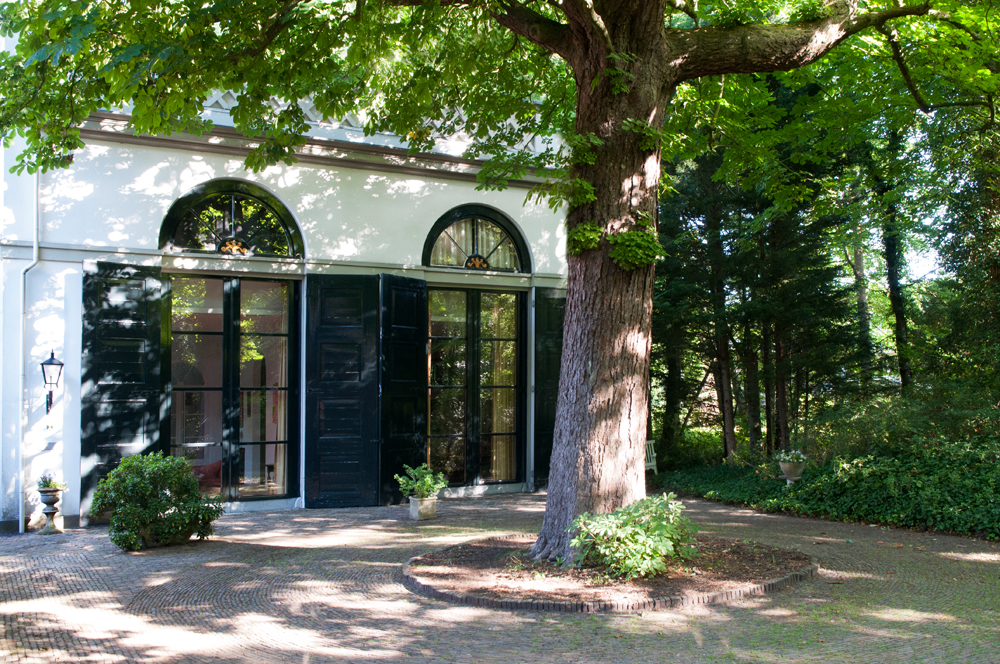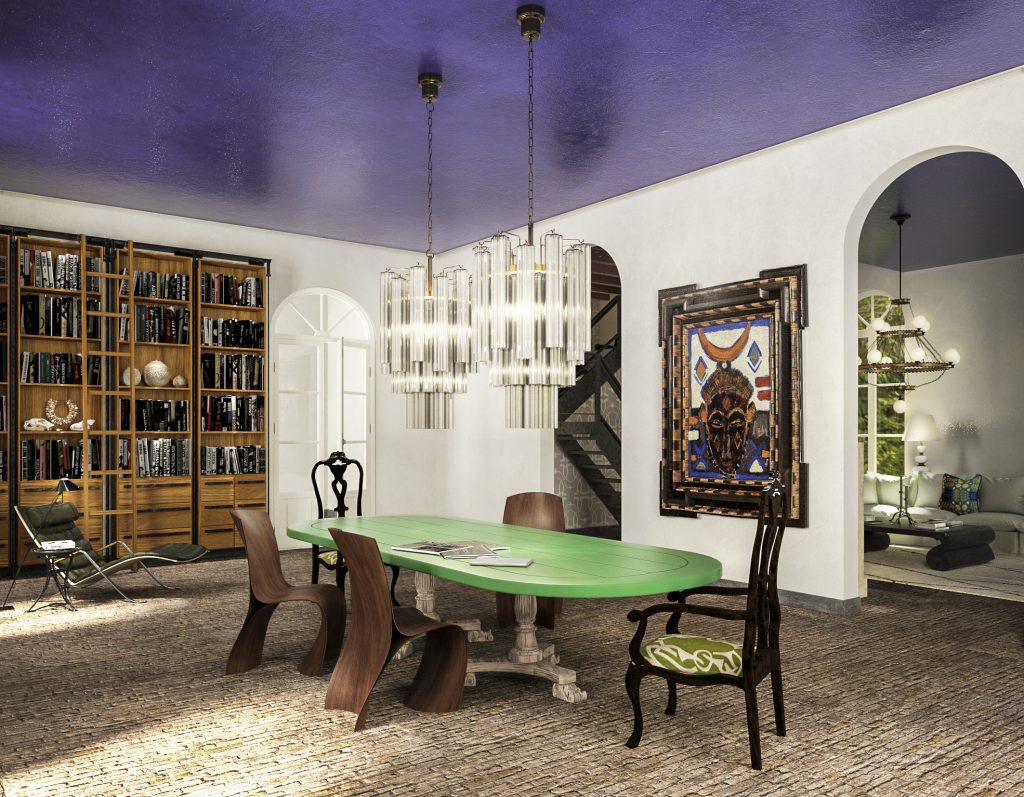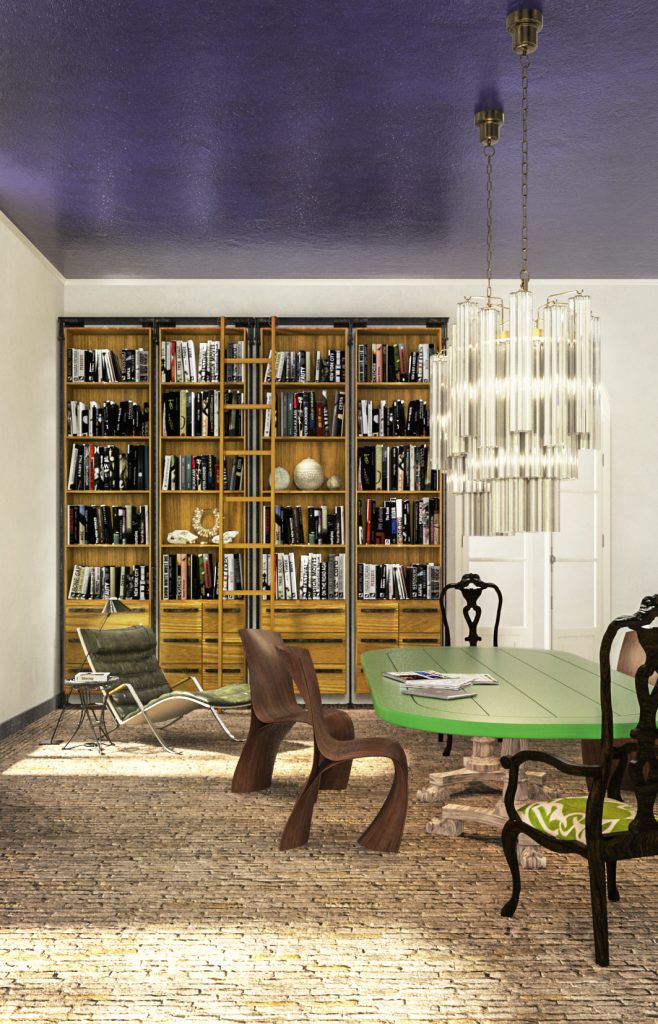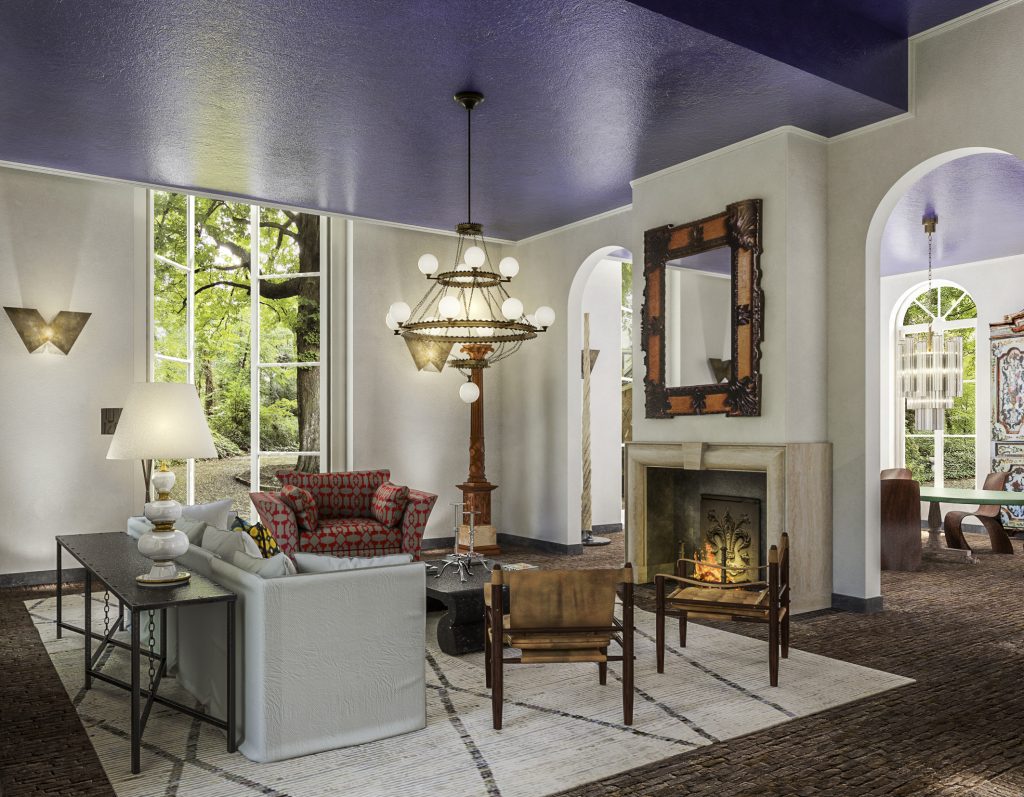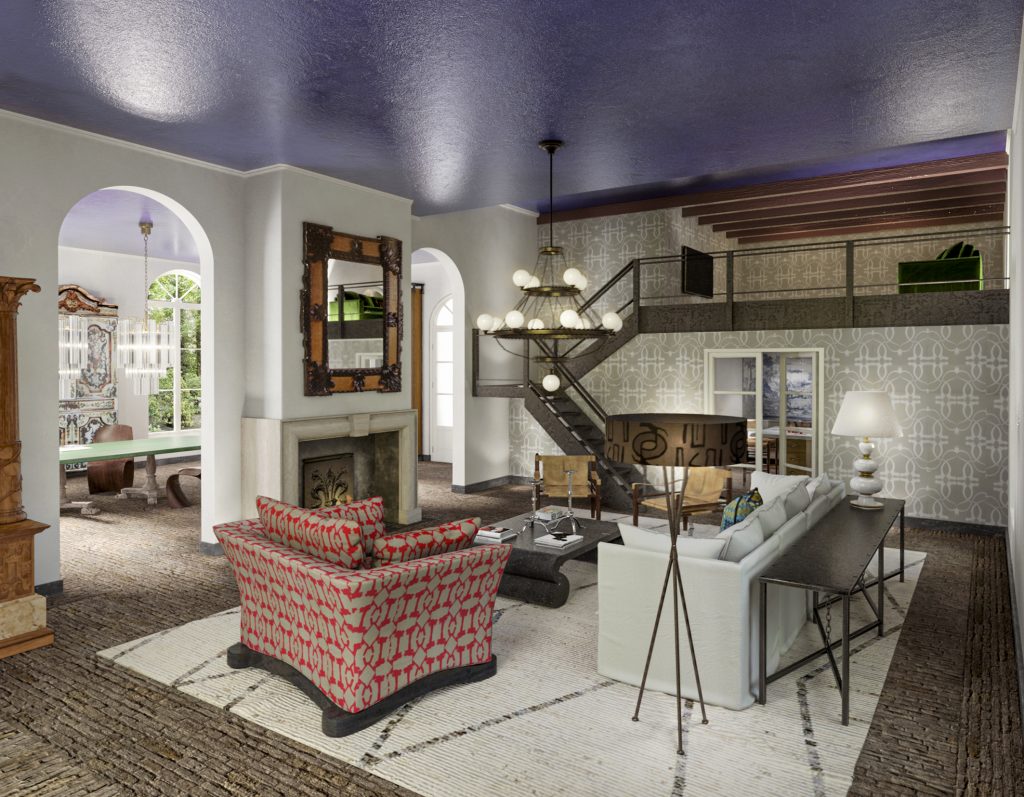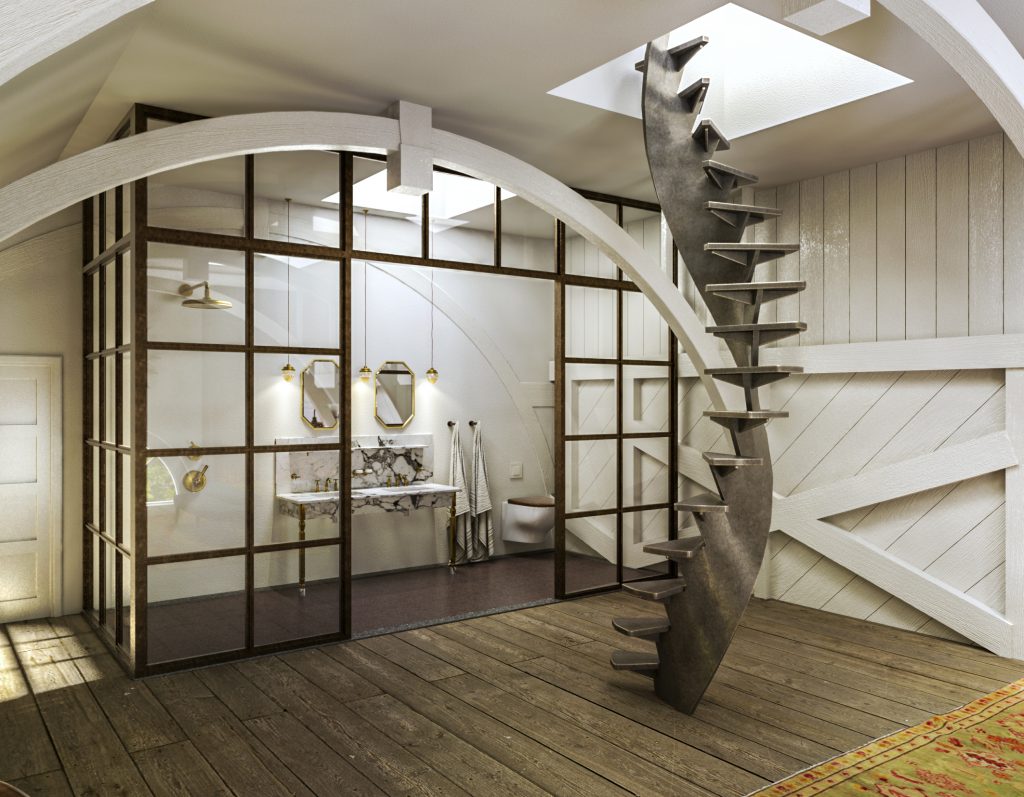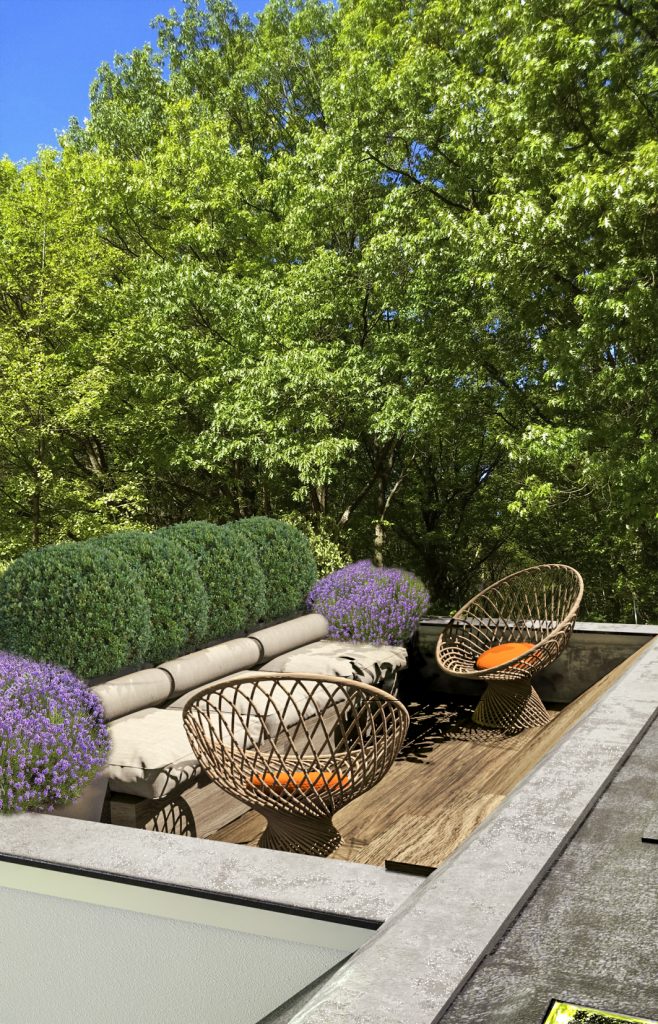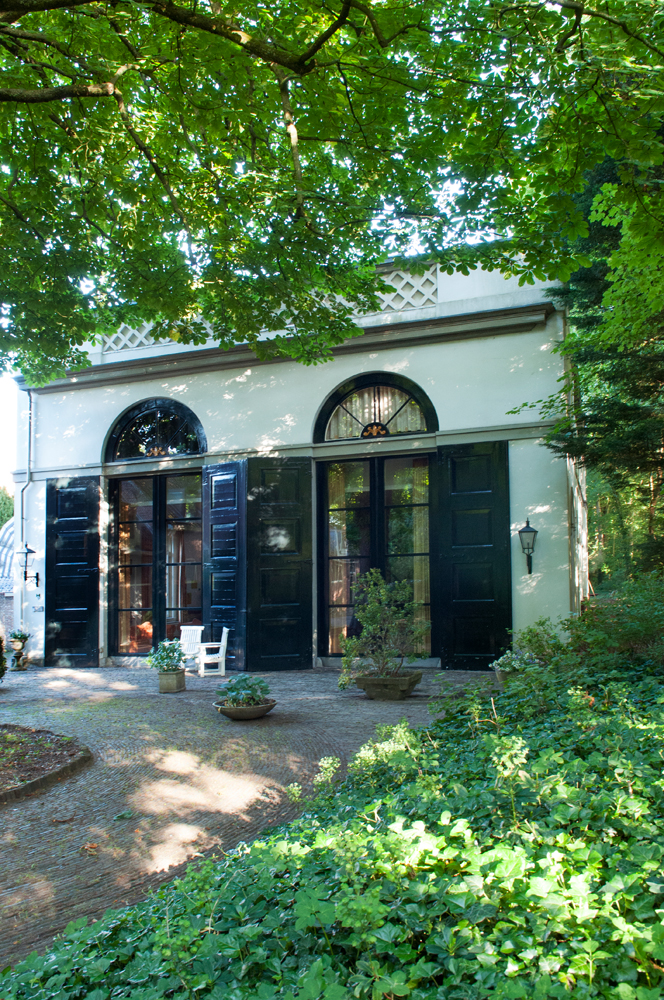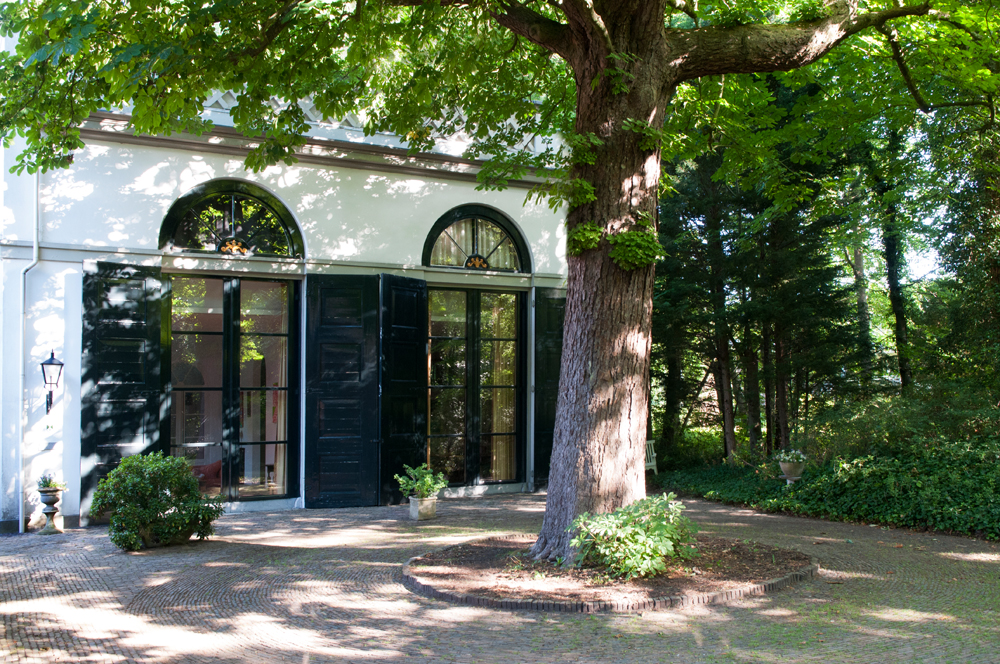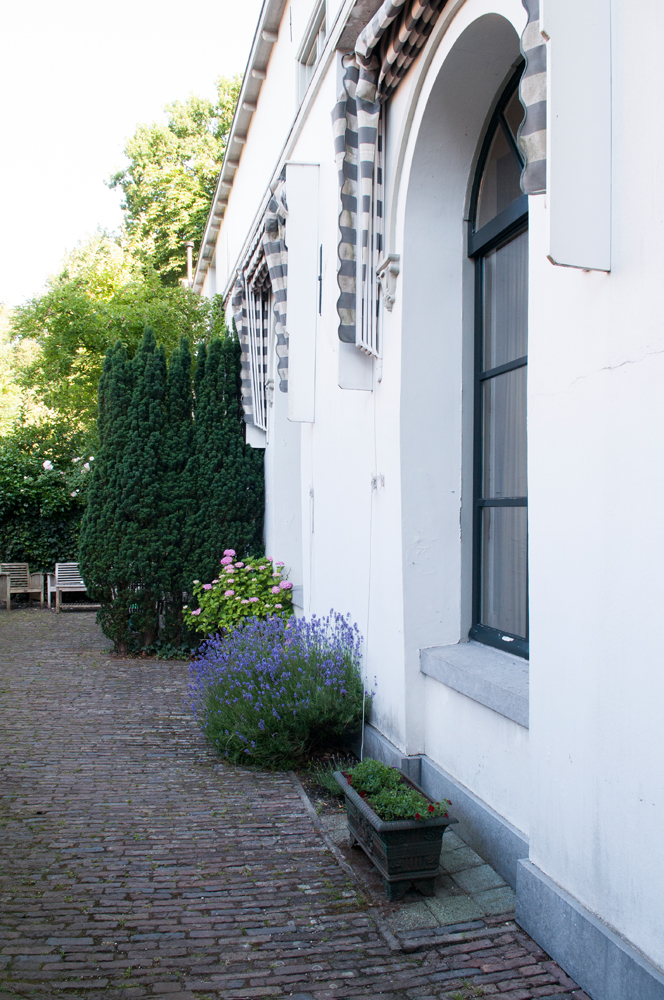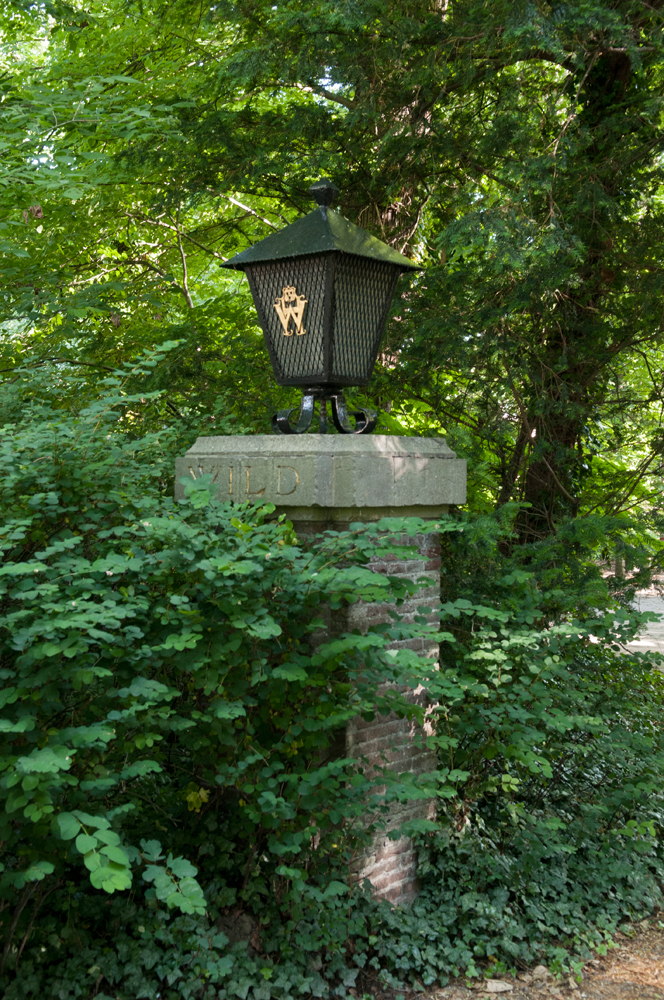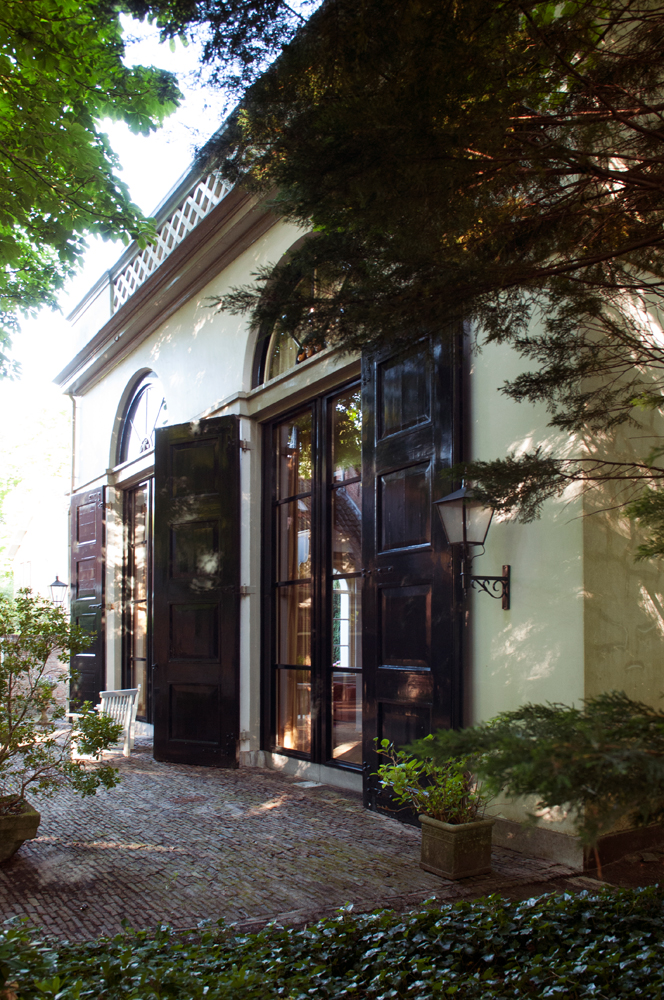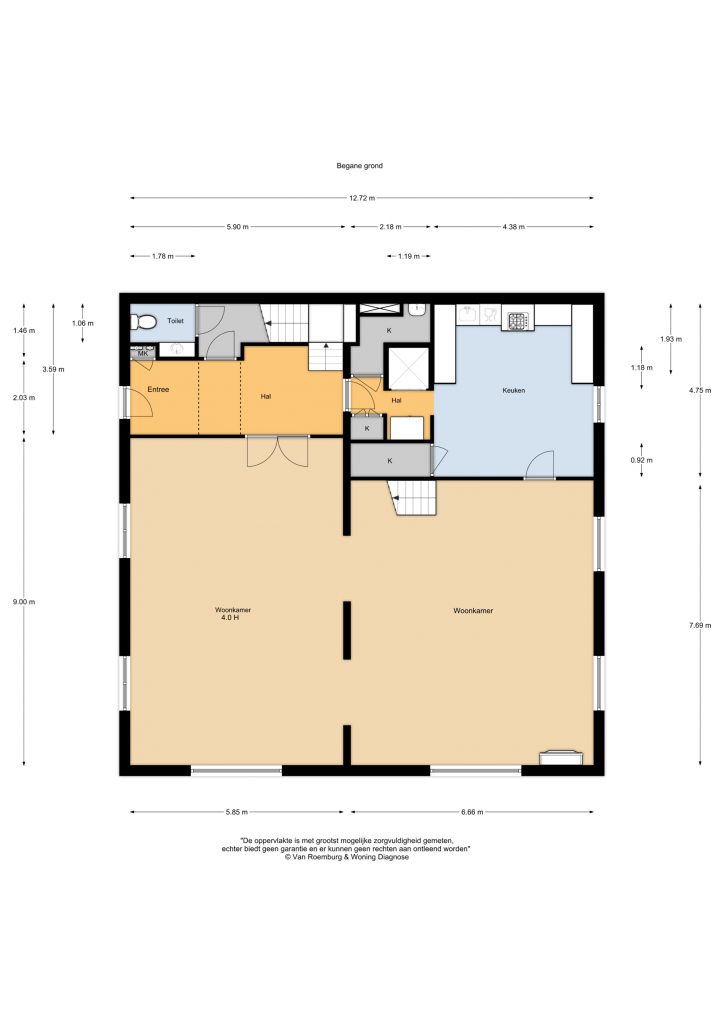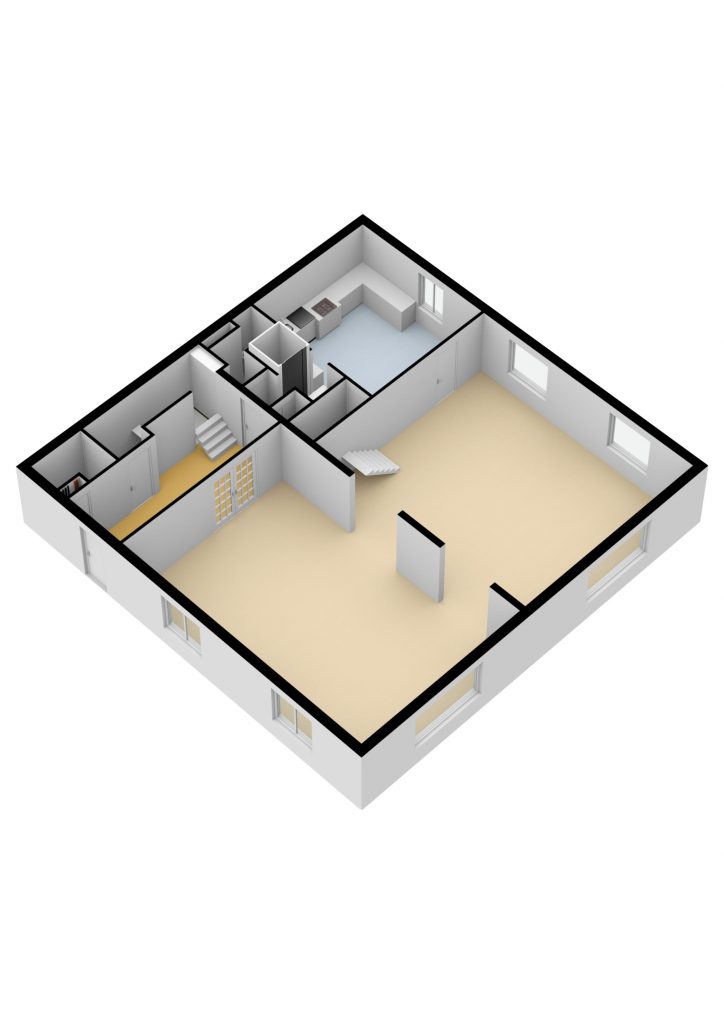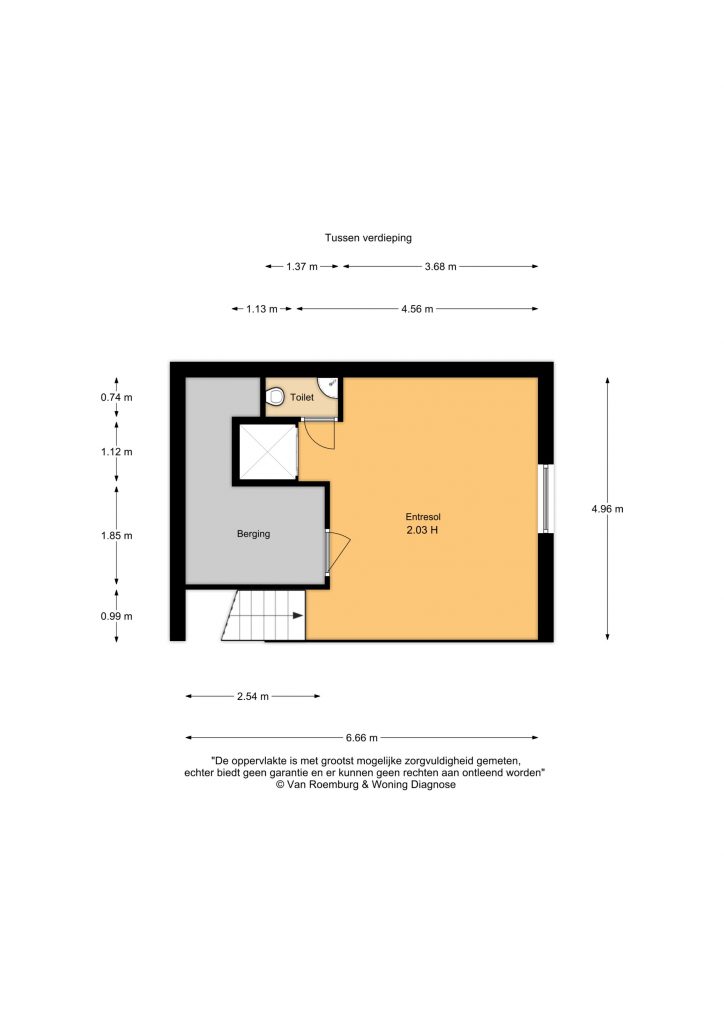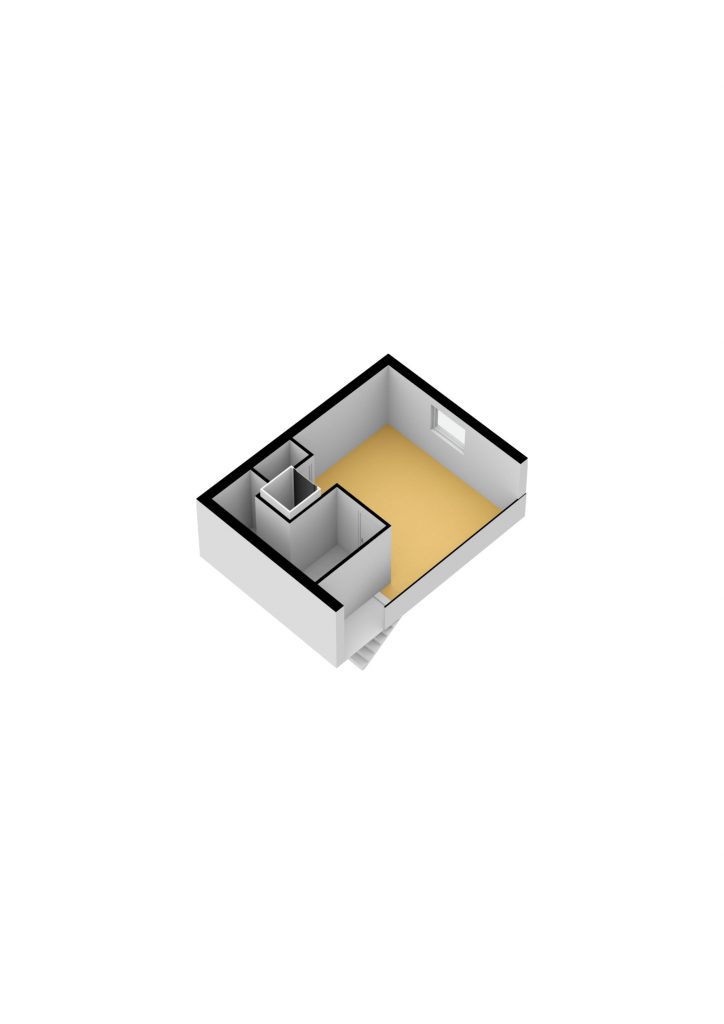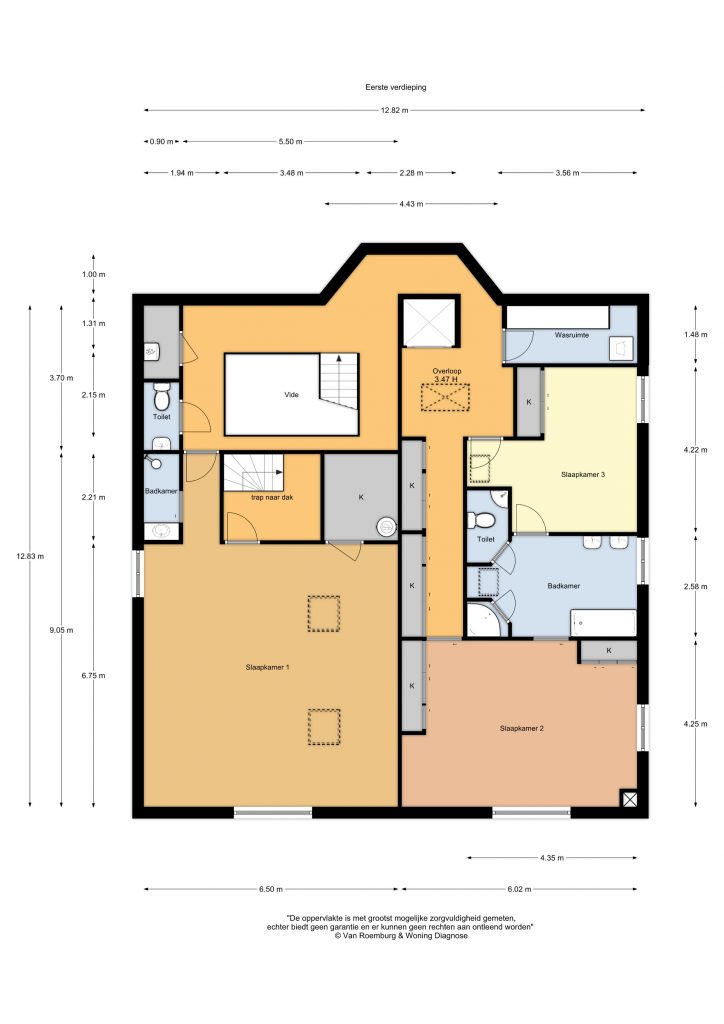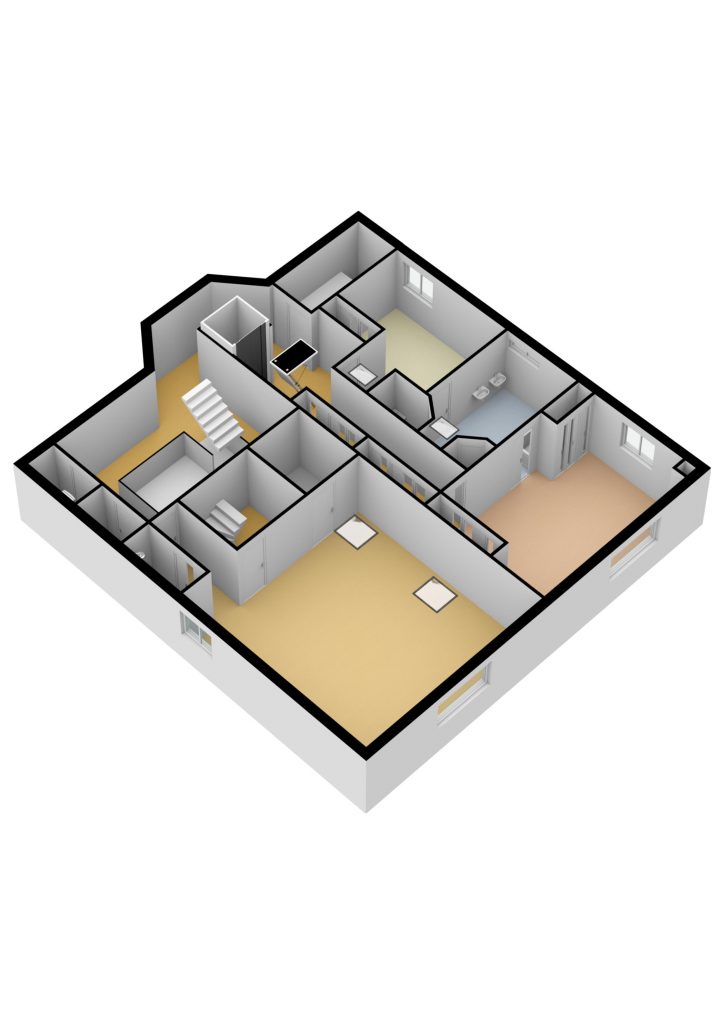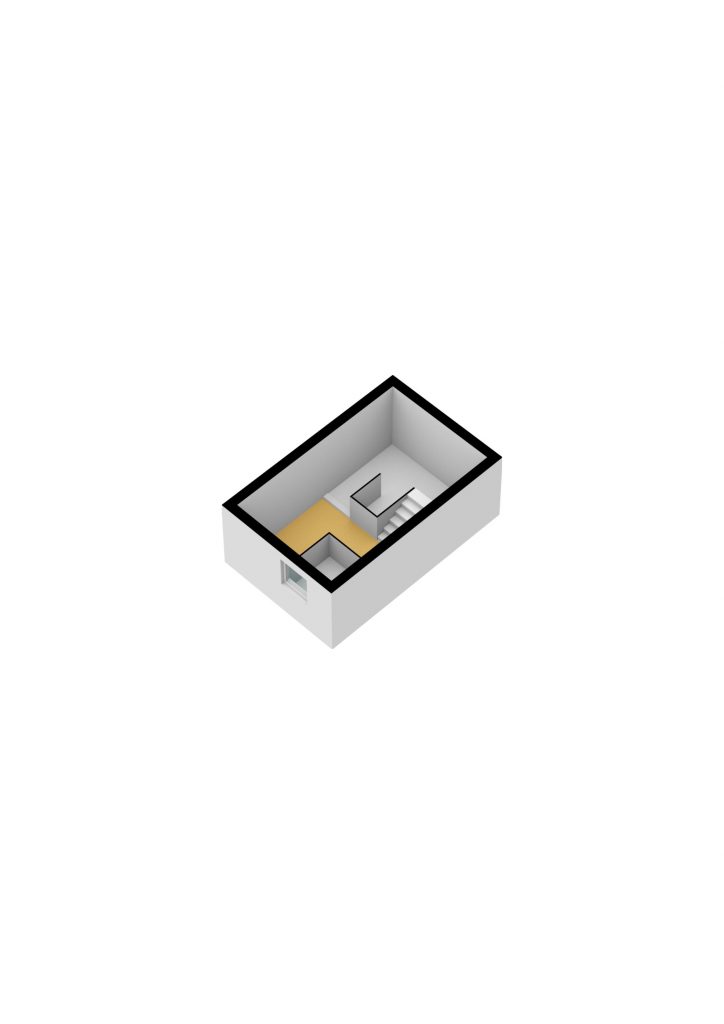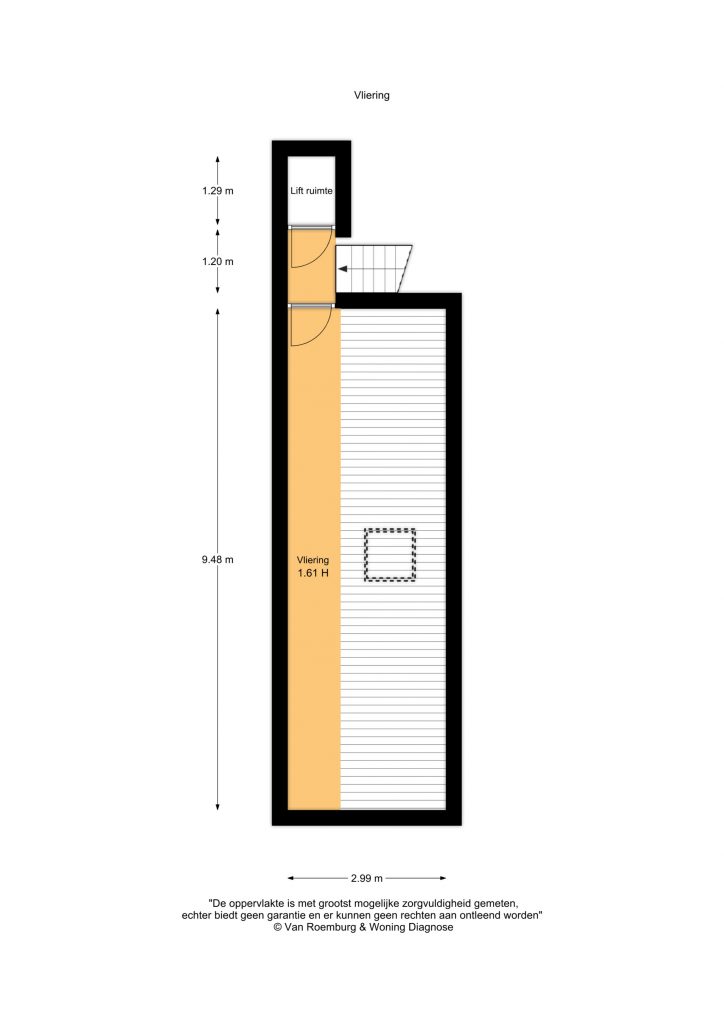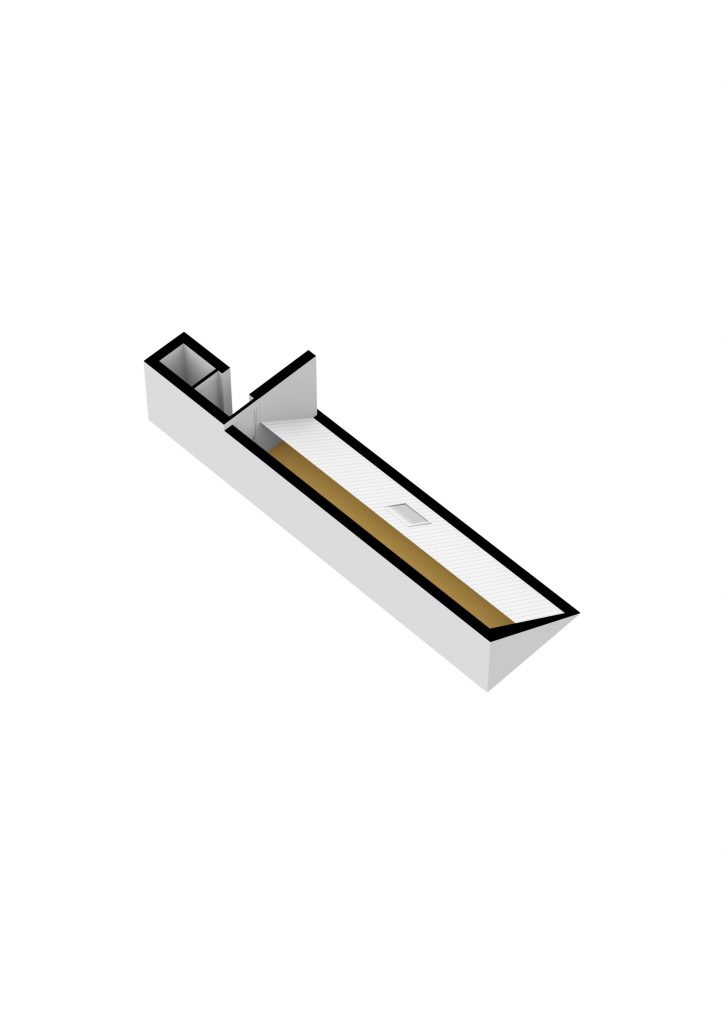For centuries, the upper layers of Amsterdam and Haarlem have fled the busy cities to find refreshment in rural Bloemendaal. Country estates were founded in the rolling landscapes, of which the eighteenth-century Wildhoef is one. In 1788, the house for the textile merchant and manufacturer Willem Philips Kops was renovated by the Amsterdam city architect Abraham van der Hart, who also designed the beautiful room in his Haarlem house on the Nieuwe Gracht for Kops, with silk upholstery from Lyon. This room, now set up in the Rijksmuseum, was designed as a Gesamtkunstwerk and is highly regarded internationally. This top quality, pursued by Kops, was also continued in the landscape garden of Wildhoef, which was laid out from 1793 by the then well-known German garden architect Johan Georg Michael. Winding paths, ponds and tree groupings give the park a natural appearance, in which picturesque places are interspersed with sublime views.
The monumental coach house from 1841 was given a place in that landscape park. It was designed by another top architect, Johan David Zocher Jr., The grandson of the park’s landscaper. The client was granddaughter Cornelia Willink, who managed a great state with her husband Jan Pieter Wickevoort Crommelin. Coach houses are pre-eminently an expression of wealth. As in many cases, and here too, it is a combination of horse stables and a coach house where the carriages were stored. The stables provided space for twelve (!) Horses.
The coach house on the left side of the building housed the coaches of the country estate. Behind the monumental chestnut, the current facade is visible with the two enormous door parties, equipped with the most beautiful hinges. These 4½ meter high doors gave access to the space in which the precious carriages could be parked and turned. To simplify manoeuvring of these coaches, one large space was created behind the doors. So nothing used to be on the spot where there is now a separation wall. To make this openness possible, a fantastic construction in the attic was made in the form of a lattice girder. This lattice girder consists of beautiful pine beams with diagonals that keep the bottom beam rigid, making the construction stable and preventing the spanning beams from sagging. A bit similar to a bridge construction. The beam of the attic, on which the roof stands, is connected to the truss beam. The hood consists of round trusses, so-called Philibert trusses, made of short wooden planks nailed together in three layers. This type of hood was invented in the sixteenth century by the architect Philibert de l’Orme (hence the name) and – after a dormant existence in the intervening centuries – was very often used in the nineteenth century. The advantage of these trusses is the large headroom that could be achieved in the attic. The roof was later provided with a central shelf, so that the building now has a roof terrace.
During recent renovations, the building has been made habitable and equipped with a spacious staircase with elevator and a subdivision into rooms. The great height of the space is still present, creating an un-Dutch effect. The incidence of light was improved in 1988 by creating large arched windows in the side walls, as they are also visible on the front facade.
The current building consists of a ground floor with a mezzanine and an attic. The entrance gives access to the spacious hall with stairs in the left aisle. The living room is directly accessible from the hall and is characterised by its great height and the light that enters through the opening of the large coach house door, which is filled with glass. Passages in the recently placed central wall give access to the dining room in the right aisle, where the other coach house door allows light through. This fireplace room features a mezzanine floor suitable for a pool table or office and access to the kitchen, which is also accessible from the main hall. The master bedroom with bathroom has been created in the attic on the left, while an internal staircase gives access to the roof terrace with a view over Bloemendaal. In the right aisle are several bedrooms with bathrooms.
All in all, the grandeur of the original coach house has been well preserved. A top building by a top architect from 1841.
Sources:
Willem de Clercq, From his diary 1811-1824, Haarlem 1869, p. 358 (The trees of Wildhoef are exquisite)
J. Craandijk, Walks through the Netherlands with pen and pencil, Haarlem 1878, vol. 3, p. 27 (The glory of Hollands dune)
Hildebrand (Nicolaas Beets), Camera Obscura, 1839
Saskia van Ginkel-Meester and others, Monuments in the Netherlands. North Holland, Zwolle 2006
Constance D.H. Moes, Architecture as the jewel of nature. The architectural drawings from the archive of J.D. Zocher Jr. (1791-1870) and L.P. Zocher (1820-1915), Rotterdam 1991
Text: Dr. Pieter Vlaardingerbroek, Architectural Historian
3D-Visuals & Photography: Gloria Palmer
PDF Brochure of Property
If you would like a PDF sent to your inbox, please CLICK HERE.
Details
|
Asking Price
|
NA
|
|
Status
|
SOLD
|
Building
|
Type of Property |
Semi-attached house
|
|
Building Type
|
Existing build
|
|
Year of Build
|
1841
|
|
Specifics
|
Normal
|
| Roof | Composite roof |
Surfaces and Volume
|
Available Living Space
|
364 m²
|
| Garden | 450 m² |
|
Number of Rooms
|
5
|
|
Number of Bathrooms
|
2 |
| Total number of floors | 2 Floors |
| Ground floor and first floor | |
Kadastral Data
|
BLOEMENDAAL 2061JK
|
Kadastral card
|
|
Owner situation
|
Owned Ground
|
Outside
|
Position
|
South. On a quiet street, near the centre
|
| Size | 1040m² |
Parking
|
Parking situation
|
Own property
|
Location
 If you would like to receive more information about this property or schedule a viewing, please contact:
If you would like to receive more information about this property or schedule a viewing, please contact:
Anne Paul Brinkman
Brinkman Fine Real Estate
Herengracht 91
1015 BD Amsterdam
The Netherlands
+31 (0) 20 244 19 62

